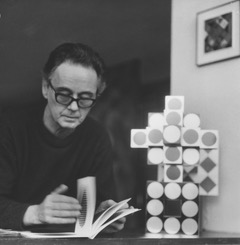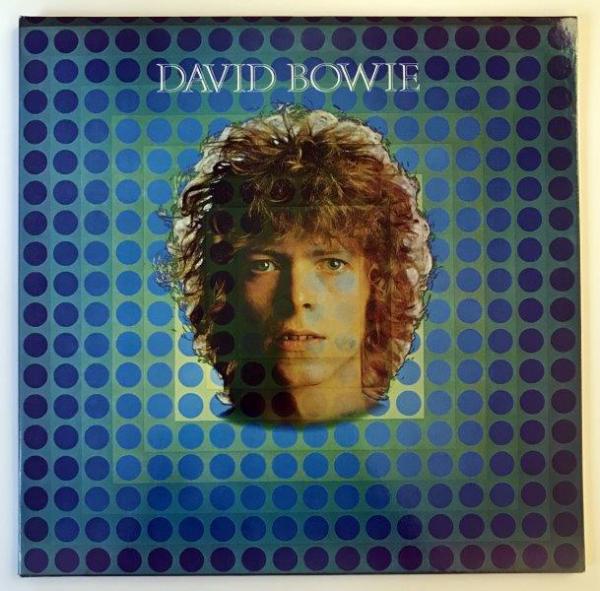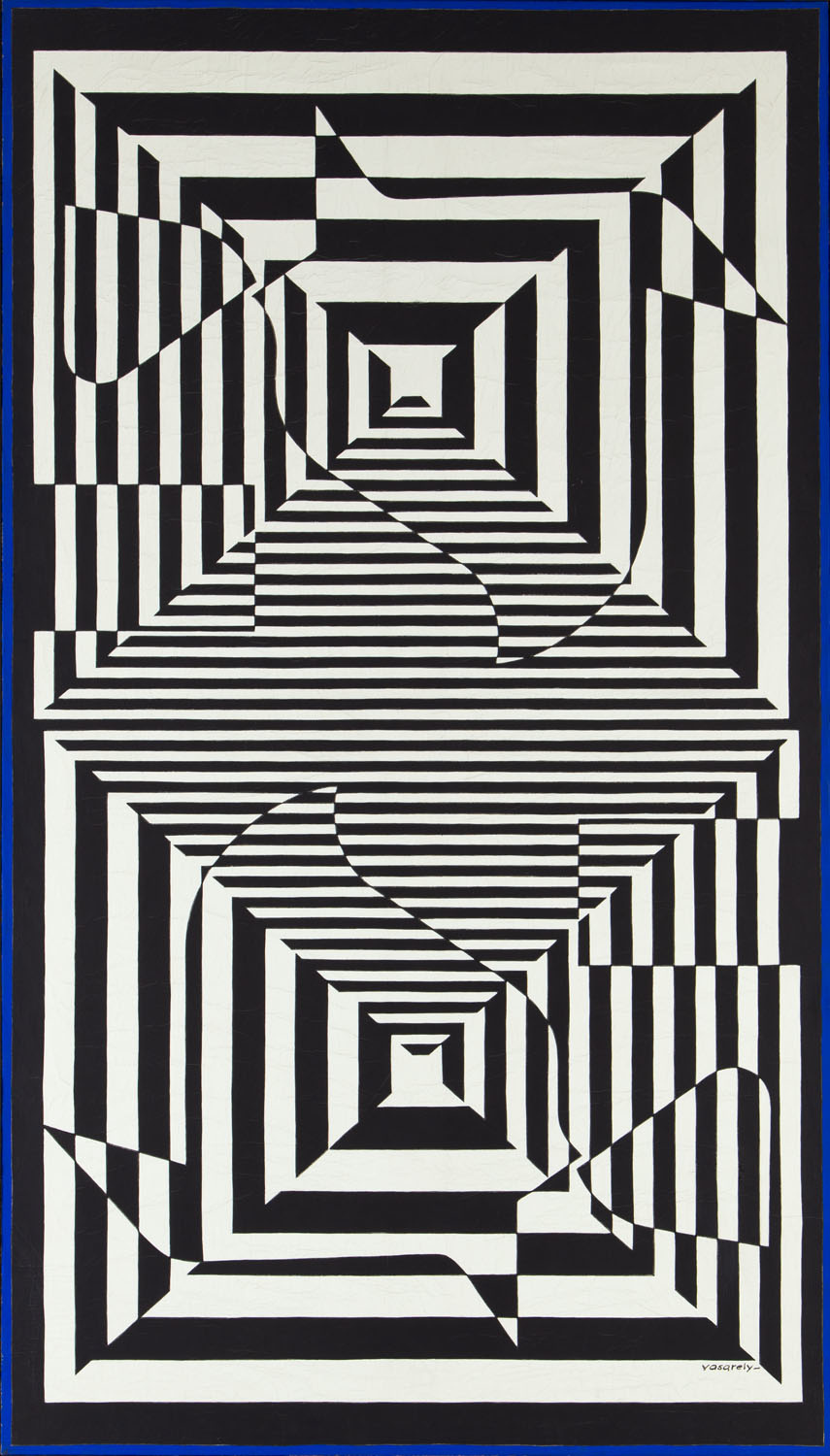Victor Vasarely… an approach based on multiples
[2022年03月29日]“The art of the privileged should become the art of the community. What is important is to have made this change both technically and materially.” V. Vasarely

A master of optical illusions, Victor VASARELY (1906-1997) initiated an entire branch of artistic creation in the second half of the 20th century. From the first deformations of sinuous lines to his later polychrome geometries with complex illusions, his artistic and sculptural research represents a superb kinetic exploration that has had a very significant influence on Contemporary art.
Before becoming the ‘godfather of Op Art’ as he is now known, Vasarely studied medicine at the University of Budapest. He began his artistic career in 1927 by attending the Poldini-Volkmann Academy, then the Muhëly Academy (the “Bauhaus of Budapest”) directed by Sándor BORTNYIK and completely steeped in the teachings of ALBERS and MOHOLY-NAGY.
His artistic career began as a graphic designer in advertising in Budapest. In 1930, at the age of 24, he emigrated to France . At that time, his creations focused on the complementarity of black and white and expressed a certain graphic sobriety. These works from the 1930s (Chessboards, Tigers, Zebras, Harlequins, etc.) already had a strong expression of movement. It wasn’t until later that his work began to exploit the power of color.
An art for everyone
In the 1960s and 70s, Op-Art enjoyed a veritable Golden Age and phenomenal public popularity. Within a very short time, Victor Vasarely became as well-known as Salvador Dali and his colorful illusions of distorted spaces began to erupt into nearly everyone’s daily lives via internal decors, the world of fashion, major retail outlets and of course via the TV. The enthusiasm for warped and deceptive visual realities quickly spread well beyond France’s borders to the rest of Europe, and as far as the United States.

David Bowie, “Space Oddity” (1969) album cover Vernon Dewhurst / Victor Vasarely
“Those under 50 cannot imagine that in the 1960s and 70s a lot of French people lived in decors largely inspired by Victor Vasarely. Like so many students at that time, my room had an orange carpet and a poster of a ‘psychedelic’ Vasarely work above my bed” (Isabel Pasquier, journalist).
Omnipresent, Vasarely also worked on an album cover for David Bowie and created the logo for the French car manufacturer Renault as well as TV sets for Jean-Christophe Averty and even the covers of the Tel collection at the publishing company Gallimard (including a “Précis de décomposition” (decomposition instruction manual) by Emil Cioran, adorned with a psychedelic yellow cube (bearing little relation to the content).
In terms of his artistic objectives, Vasarely had effectively achieved his goal with resounding success. He had created a popular artistic language in harmony with his ambition to disseminate the “common treasure” that is art. He declared “Art should be disseminated among the masses. That is where space has no limits.”
The multiplication of images – vs – the art market
In order to materialize his credo “I don’t care if my work is reproduced many thousands of times! I am not into creating private property. I want to create multipliable art”… Victor Vasarely resorted to the production of series on an almost industrial scale, and indeed, it was precisely this mass production of his images that generated his immense popularity.
But the ultra-popularity of his work and style was followed by a form of outdatedness as Op-Art went out of fashion in the 90s. The prices of his works were impacted by the arrival of new modes and the ‘over-abundance’ of his images ultimately began to work against him. On the art market, Victor Vasarely multiples were considered ‘too popular’ and a form of fatigue set in vis-à-vis his aesthetic that was so emblematic of an era. His prices fell drastically in the 1990s with some paintings losing more than half their value. However, after a decade or so, Vasarely’s work once again began to attract strong interest from collectors around the world. The recent Vasarely retrospective, Sharing Forms at the Pompidou Center in 2019, certainly contributed to this ‘revival’.
Some art market professionals consider the renewed interest in artists from the 1960s to 1980s as essentially nostalgia-driven. Others see Vasarely’s work as a historical stepping stone to the advent of digital art because he sensed before anyone else that optical art could be generated by an artificial intelligence.

Whatever the reasons, the recovery in demand for his work is indeed real, and the auction market is regularly confirming this renewed interest. Last December, for example, a large canvas entitled “Yabla” (1961) fetched $265,000 in Warsaw (Desa Unicum, Poland), whereas in 2012 it failed to sell at around $100,000 (Sotheby’s Paris, lot #28, Yabla).
His prices vary substantially depending on the artistic/material qualities and dimensions of the canvases, but also depending on their creation date. Collectors are primarily looking for works from before the 1980s, after which it is difficult to say whether they are truly by Vasarely or whether they were executed by assistants working in his studio. In addition, some canvases pose double-dating problems, Vasarely having reworked certain canvases on the basis of older motifs. Collectors naturally prefer canvases with a single date to ensure that they own a unique work and not a work comparable to an original “copy”.
Although Vasarely’s prices have increased sevenfold since 2000, the artist remains undervalued given his importance. This tutelary figure of 20th century art has indeed never reached the million-dollar threshold at auction. His auction record currently stands at $883,000, although an artist of this caliber clearly deserves a much higher valuation. The auction record for works by Josef Albers, one of the key drivers of Op-Art, currently stands at 3 million dollars…

Reference site: https://www.fondationvasarely.org/victor-vasarely/




 0
0
